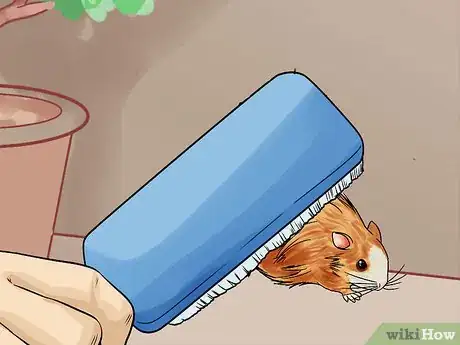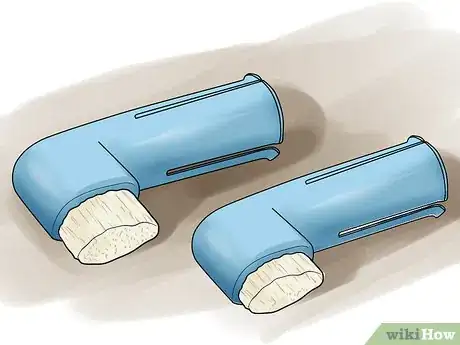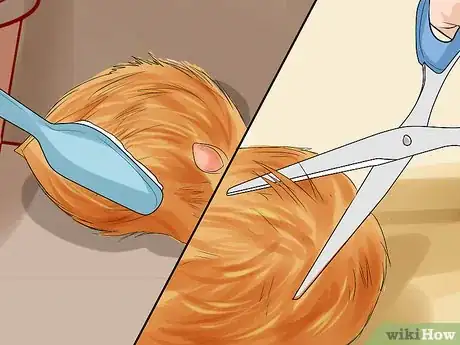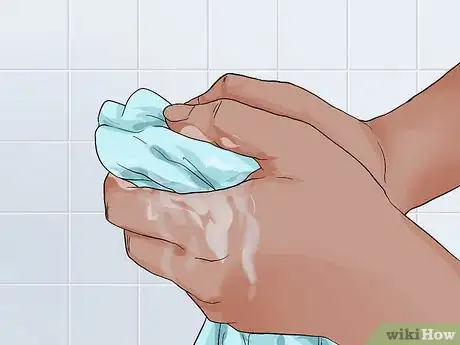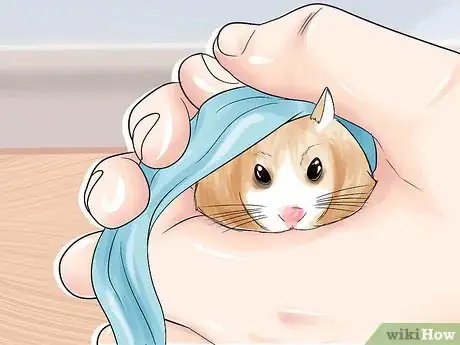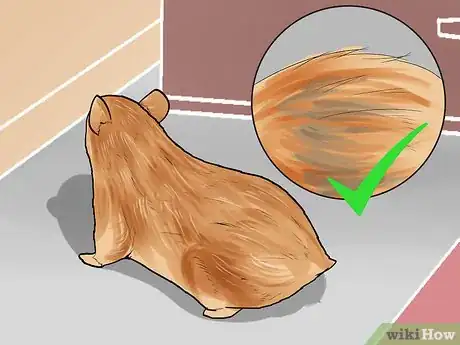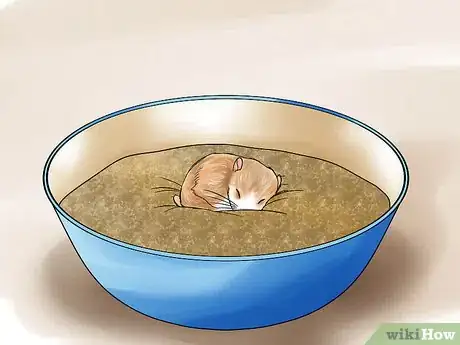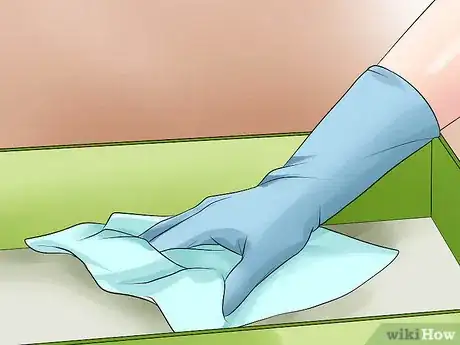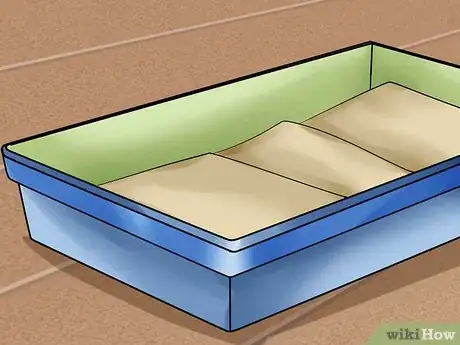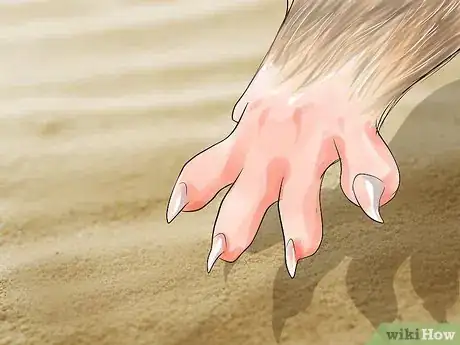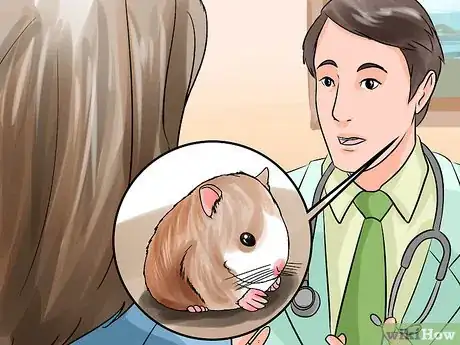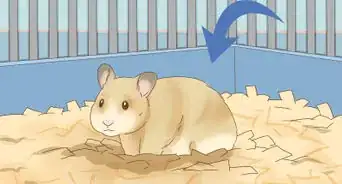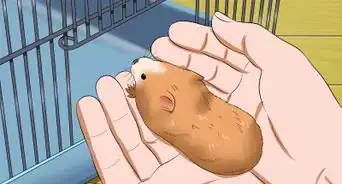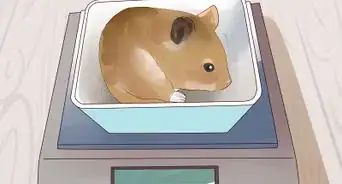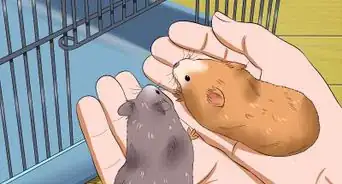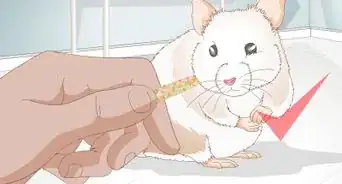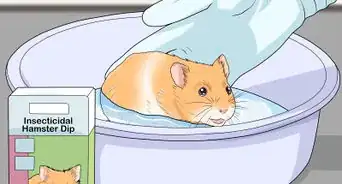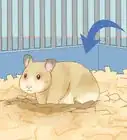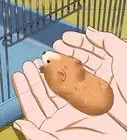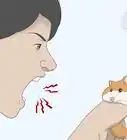This article was co-authored by Pippa Elliott, MRCVS. Dr. Elliott, BVMS, MRCVS is a veterinarian with over 30 years of experience in veterinary surgery and companion animal practice. She graduated from the University of Glasgow in 1987 with a degree in veterinary medicine and surgery. She has worked at the same animal clinic in her hometown for over 20 years.
wikiHow marks an article as reader-approved once it receives enough positive feedback. In this case, 91% of readers who voted found the article helpful, earning it our reader-approved status.
This article has been viewed 57,602 times.
In general, hamsters are very clean animals and do not require extra grooming other than what they do on their own. However, long-haired hamsters may occasionally need some extra help to keep their fur clean and tidy. And some hamsters love the attention and sensation of being brushed. Determine the best grooming routine for your hamster based on their enjoyment of the following activities.
Steps
Cleaning Your Hamster
-
1Brush your long-haired hamster. Long-haired hamster may get dirt or mats in their fur that can only be removed by brushing them. The best instrument to use is a clean, unused, soft-bristled toothbrush. Some hamsters may enjoy being brushed, and will sit still for you. Others may find it very annoying and try to get away.
- Long-haired females may not need to be groomed as often as the males, as their normally have shorter fur.[1]
- Some long-haired male hamsters have a ‘skirt’ at the end of their bodies, made of fur. This fur may need to be cleaned more often than other parts of them.
- You may want to get in the habit of brushing your long-haired hamster once a week.
-
2Buy a rubber finger-brush for your hamster. If you want to try something different, and if you think your hamster would appreciate it, you can buy a small rubber brush that slip onto your finger. Some are designed for pets, some are designed for humans (as tiny massage fingers). If you find one and want to use it, it would work the same as a toothbrush. Just remember to be gentle.[2]Advertisement
-
3Cut your long-haired hamster’s fur. Some long-haired male hamsters have skirts that can be a couple of inches long. These skirts may end up dragging through your hamster’s water dish or poop and getting dirty. While your hamster should be able to clean his own skirt, it may be easier to simply cut back the fur instead.[3]
- This is also helpful in the warmer months if your hamster is overheating. You can cut back the length of his skirt to keep him cool.
- Be careful that you don’t accidentally cut your hamster’s tail, which will be shorter than the skirt.
-
4Remove toxic substances from your hamster. If your hamster should get himself into trouble and get some sort of toxic substances on him, you do not want him to lick it off. Hamsters clean themselves with their tongues and mouths, which means anything they clean off their fur will be ingested. Do the following instead:
- If possible, use scissors to cut away any fur that contains the toxic substance.
- If you cannot cut off the fur (maybe, as an example, the substance is also on his skin), use a clean, unused, soft-bristled toothbrush with a very small amount of warm water. Use the toothbrush and water to clean the area until all the substance is gone.
- If you use water to clean you hamster, use the smallest amount possible.
-
5Use a damp cloth for clean your hamster. One alternative to using a wet toothbrush to clean your hamster’s fur is to use a damp cloth. As with the toothbrush, use only the smallest amount of warm water you can. And if possible, try to only get the top layer of your hamster’s fur wet.[4]
-
6Avoid using anything other than water. It may seem tempting, but never use shampoo or soap on your hamster. If you need to clean him, use only warm water. And use as little water as possible so as not to remove any of the important oils on his fur.
- The only exception here is if your vet recommends something specific.
-
7Dry your hamster completely. Before you hamster goes back in his cage, make sure he is completely dry. Any dampness left in your hamster’s fur can cause him to get cold, which in turn can make him sick. If you’ve used water on your hamster to help clean him up, you may want to hold him until he’s try, in order to allow you body heat to warm him up.
Helping Your Hamster Stay Well Groomed
-
1Do not worry if your hamster is a little dirty. Hamster spend up to 20% of their time grooming. If you hamster looks a little dirty at one point, he may clean it up himself in a short while. Before trying to ‘help’ you hamster by grooming him, just wait a few hours or even a day to see if he’s able to clean himself up.
-
2Give your hamster a dust or sand bath. Some hamsters may enjoying having a ‘bath’ in chinchilla sand or rabbit dust. This dust/sand is designed specifically to help keep small animals clean, but works great for hamsters too. Simply put some dust/sand in a container big enough for your hamster to roll around in, and put the container in your hamster’s cage.
- The container should be sturdy enough that it doesn’t slide around in the cage when your hamster is using it.
- The container should also have low enough sides so your hamster can safely climb in and out.
- If you feel it necessary to sterilize the dust/sand, you can put it in your oven (in an oven-safe bowl) for 10 minutes at 350F.[5]
-
3Keep your hamster’s cage very clean. One of the reasons it may appear that your hamster needs grooming is because he’s constantly covered in dirt from his dirty cage. Therefore, in order to prevent needing to groom your hamster, remember to keep his cage clean at all times.
- You should clean the cage completely at least once a week, without your hamster inside. Put him in another safe place, empty out his cage, wash it, and them put fresh bedding in the cage.
-
4Try a paper-based bedding for your hamster. As you’ve probably already noticed, there are dozens of options for bedding at the pet store. To help keep your hamster clean, there are a few bedding options that may work better than others. One option is to use bedding made of recycled paper. Another option is to use wood-based cat litter for bedding.[6]
-
5Provide materials for your hamster to chew on. Hamsters have very interesting teeth. Unlike some other animals, a hamsters teeth never stop growing. In the wild, a hamster would use his teeth enough to keep them at the proper length, but in a cage he may need some help. There are several things you can provide to your hamster that he can chew on and keep his teeth healthy. Options are as follows:[7]
- Unpainted, untreated wood chips.
- Hay from the pet store..
- Fruit-flavoured chew toys.
- Twigs (if you get them from outside, make sure they haven’t been sprayed with pesticides).
- Scrap cardboard such as: toilet paper and paper towel rolls, kleenex boxes, cereal boxes, etc.
-
6Watch your hamster’s nails. Hopefully your hamster is active enough in his cage that his nails stay short on their own. But if you ever notice your hamster’s nails growing too long, especially if they’re causing discomfort, you will need to have his nails trimmed. You can trim your hamster’s nails on your own, using small nail clippers or animal nail clippers, or you can bring him to your vet for assistance.[8]
-
7Take your hamster to the vet if he stops grooming. As already mentioned, hamsters normally spend 20% of their time grooming. But they also spend a significant amount of their time sleeping. However, if your hamster ever goes for 24 hours without grooming himself, it means something could be wrong. At this point it is best to take your hamster to the vet for a checkup.
Warnings
- Bathing your hamster can actually remove protective oils from the hamster’s coat and skin. These oils protect your hamster and keep him warm. Removing them in a bath can actually be more harmful than helpful. Only bathe your hamster if absolutely necessary, and keep him warm until his fur is completely dry.⧼thumbs_response⧽
- Short-haired hamsters, in general, do not need to be regularly groomed by their owners. Hamsters are very capable of keeping themselves clean and groomed. In fact, hamster can spend up to 20% of their time on grooming!⧼thumbs_response⧽
References
- ↑ https://www.youtube.com/watch?v=L6fEPLzeJFk
- ↑ https://www.youtube.com/watch?v=L6fEPLzeJFk
- ↑ https://www.youtube.com/watch?v=L6fEPLzeJFk
- ↑ https://www.youtube.com/watch?v=L6fEPLzeJFk
- ↑ https://www.youtube.com/watch?v=L6fEPLzeJFk
- ↑ https://www.youtube.com/watch?v=L6fEPLzeJFk
- ↑ http://www.banfield.com/pet-health-resources/pet-health-concerns/small-pets/small-mammals/hamster-grooming-exercise-guide
- ↑ http://www.banfield.com/pet-health-resources/pet-health-concerns/small-pets/small-mammals/hamster-grooming-exercise-guide
